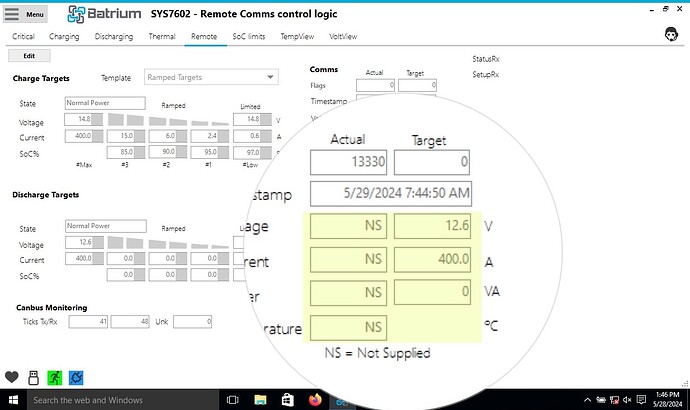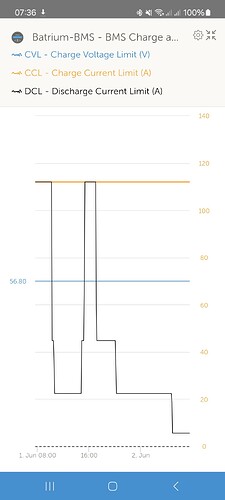Solar power and an engine alternator may not provide the power you require to power your loads and charge your battery. So, this problem will always be part of your system design and during balancing it will happen, that you do not have enough power to maintain a full battery.
Besides that, my opinion is, not to charge batteries always up to cell voltages, where balancing is possible to take place. See this article for details: Charging Marine Lithium Battery Banks | Nordkyn Design Keeping cells in voltage areas for balancing over long time, overcharges the cells and therefore destroys their cell chemistry and capacity.
This is both to get your expectations right, to explain my solution to your problem. I would not look at charge currents anymore. In your case, it will be impossible with nearly constant charge currents from PV and generator to get constant charge currents for your battery with non-constant DC loads.
Instead, start looking at charge voltages. One reason is the above article about correctly charging Lithium cells. Another reason is the physical impossibility to create constant charge currents towards your battery with three sources or sinks of electricity in your system: PV, battery and DC loads. My system is similar: PV, battery, AC loads and grid feed in. In my case, Victron documentation is clearly stating, that CCL is ineffective with feed in from DC. DC coupled PV needs to provide full power, as much current as possible. And this current either goes into the battery or is feed in into the grid by the MultiPlus. So the split between current through battery and through MultiPlus can only be controlled by the voltage. Your PV power goes either to your DC loads or to your battery. Only the voltage decides, where it goes to.
And here comes the physical why: The more full your cells get, the more the cell chemistry is not able to push any more Lithium ions from kathode to anode, the cell internal resistance rises and therefore cell voltage rises.
Now, configure your charge voltage to 3.37V per cell (float voltage). That is the area where cells can remain the whole time without being overcharged. That’s how I do it. And then from time to time, when state of charge is already at 99% and charge current is already 0A and your PV has to reduce power, raise the charge voltage to 3.45V (minimum for balancing) and look at maximum and minimum cell voltages until they have only a difference of 0.1V and your cells are balanced. You can then reduce charge voltage again to 3.37V per cell to not overcharge them.
This cell voltage based top-balancing is unfortunately not supported by Batrium. It is also not supported by any other currently existing BMS on the market. At least I don’t know of any. Batrium only looks on “Bypass session” CA3 for every cell. Every cell needs to be “balanced” by CA3 mAh and then Batrium considers battery as fully charged and state of charge jumps from 99% to 100%. Instead the cell voltage difference should be the right trigger to consider a battery as fully charged. And only if cell voltages are at “Bypass Volt” CV9. @James Please consider this charge termination condition in Batrium software once in a future version.

